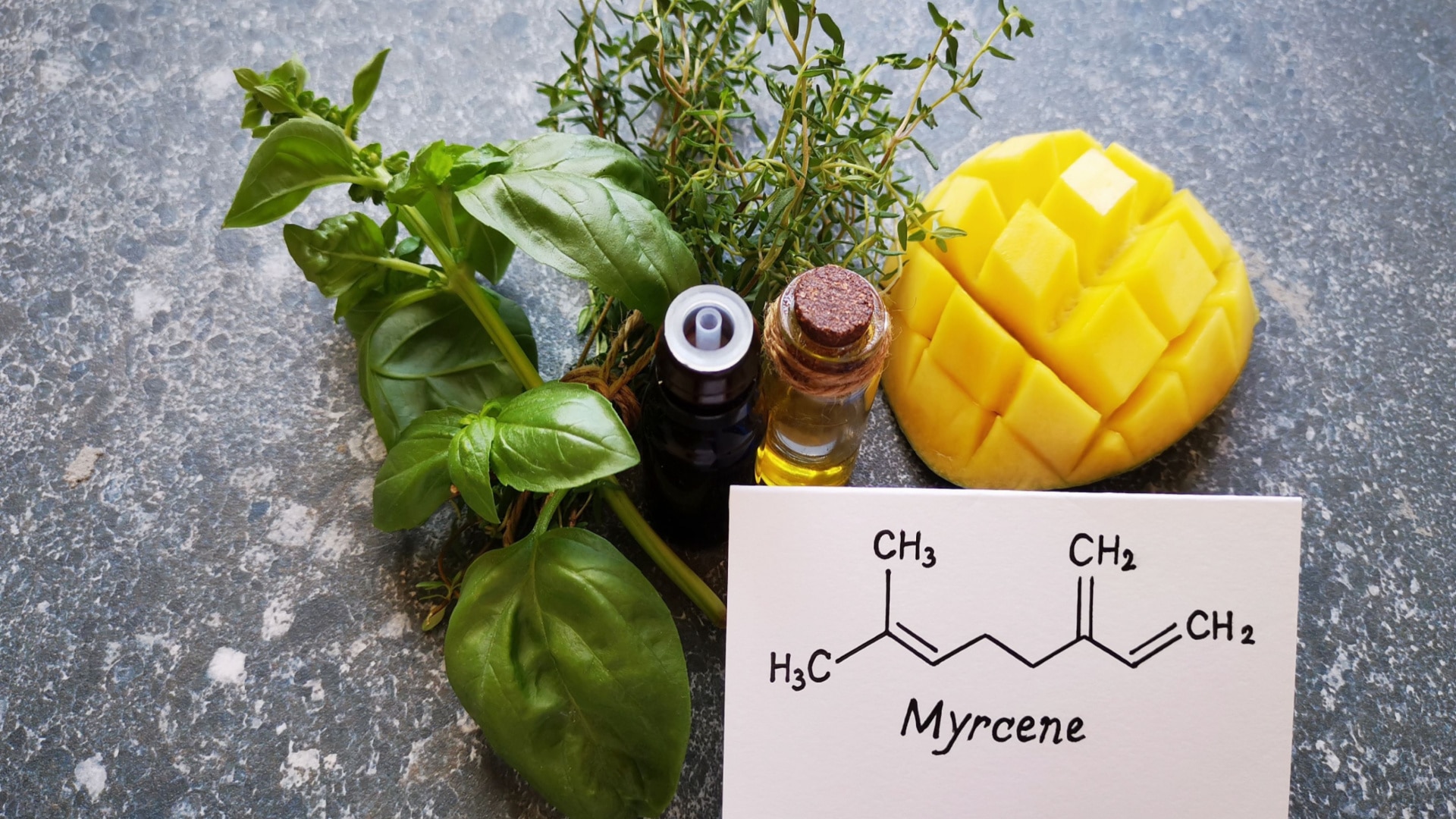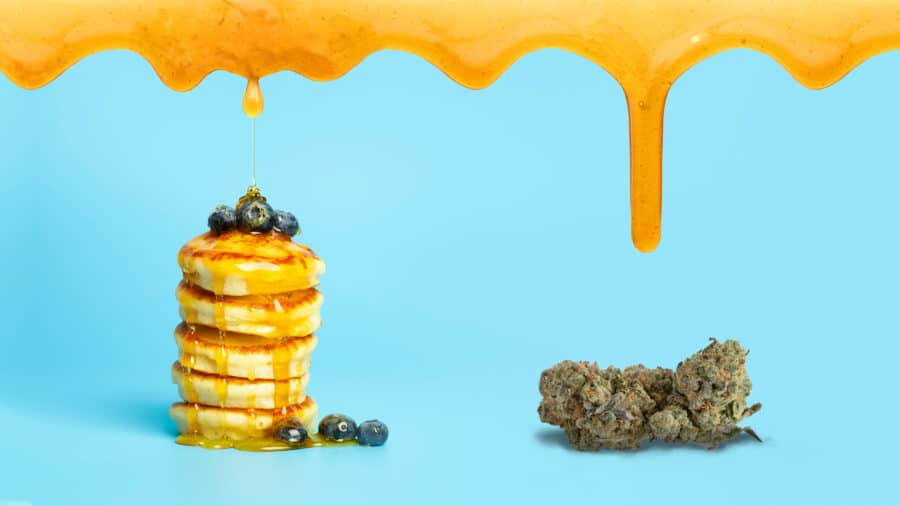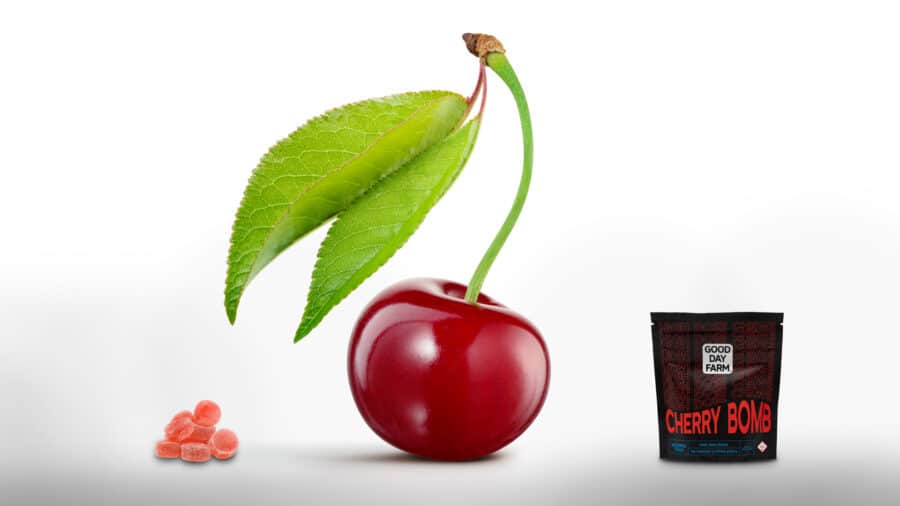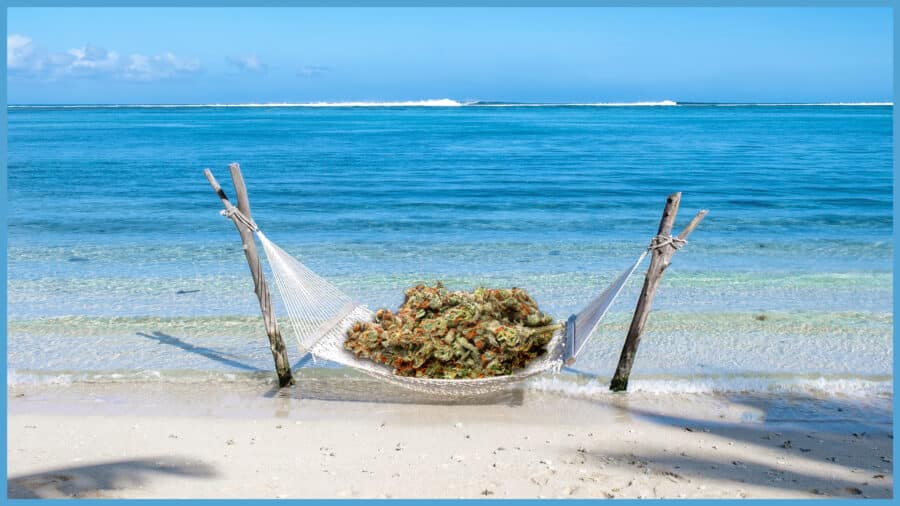Terpene Talk: Myrcene

Myrcene is the most abundant terpene found in cannabis, occurring naturally over 20% of the time in cannabis strains. If you’re a regular cannabis user at all – even if you’re an infrequent cannabis user – there can be no doubt that myrcene has at some point, or even multiple points, worked its calming magic on you. To enjoy cannabis is to enjoy myrcene, it would seem.
Or would it? As far as immediately noticeable effects myrcene may have on you via your cannabis consumption, it’s mostly known for its relaxing effects. As you might guess, it’s a typical component of most Indica strains. Of the three strains I’ve reviewed that featured myrcene in their terp profiles (Mo’ Rockin’ Kush, Lumpy Space Princess and Mimosa RBX), only one – Lumpy Space Princess – was a great fit for me, though linolene was the dominant terp in that strain with some caryophyllene thrown in for good measure. Regular readers will know that Indicas and I do not always see eye to eye and having done a bit of research on myrcene for this article, now maybe I understand why.
But in this day and age of the ever-present hybrid strain, that doesn’t mean we should get into our heads that certain terpenes should absolutely be off limits. Again, Lumpy Space Princess is one of my favorite strains in months, and while myrcene is present, the linolene and caryophyllene clearly balance it out into something that works serious magic on me.
Myrcene also occurs naturally in hops, giving cannabis and certain beers a possible connection, which is not something I thought I’d discover when I sat down to learn more about myrcene. Perhaps it stands to reason, as beer and I do not make fine bedfellows. If you’ve ever heard the theory that eating mangos before ingesting cannabis will improve your high, this is due directly to the presence of myrcene in the mango and the ability for the cannabis and the fruit to work in tandem with one another.
Other common places you can find myrcene include lemongrass, basil, bay leaves (love cooking with my bay leaves, though!), cloves, cinnamon, and citrus fruits. It is a popular additive, used in flavorings of food and drinks. It’s also used in cosmetics, detergents and soaps. Myrcene would appear to be a regular part of our lives, even though we never talk about it by name.
Purported medical benefits from myrcene use include anti-inflammation. Antiseptic, anti-bacterial, antidiabetic, antioxidant, anti-fungal, anti-cancer properties are also said to exist within this most common of terpenes. Apparently, some refer to myrcene as the mother of all terpenes due to these many purported health benefits. As always, we are quite literally on the edge of the terpene scientific frontier, so don’t build your health plans around any of this information, but certainly tuck it away somewhere in the back of your brain for possible future reference.







